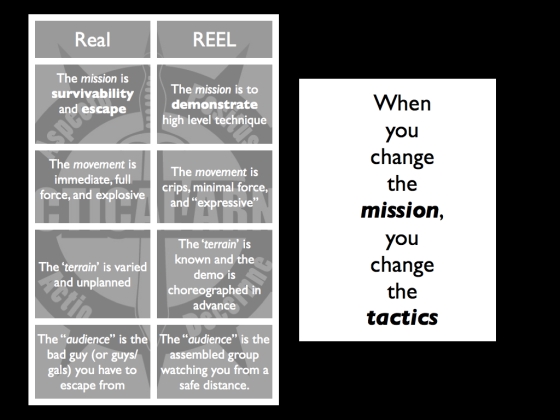Form, Power, Focus, Speed… This is the technical progression from the Kenpo influence on TacArnis training.
Tonight’s workout targeted POWER and FOCUS by using a ‘functional training’ approach. It’s challenging, fun, and good strength/conditioning to boot.
GOALS/OUTCOMES:
- Using objects as visual and ‘touch’ references to develop awareness of where energy is going and how much energy is being creating
- “POWER” training using the 10 pound medicine ball to ‘trick’ the nervous system into recruiting more muscle/energy than just empty hand alone
- – it’s also a lot of fun to bounce that ball around the room.
- “FOCUS” training with a focus mitt (no pun intended) held in both hands. This helps students ‘see’ where their energy starts and where they send it because they know where they are starting/sending the focus mitt when the throw it.
Many times – especially as beginning students – we only ‘throw’ our energy TO the bad guy instead of THROUGH the bad guy. By using this type of drill/training, students learn faster, get stronger and better conditioned – as well as ‘smarter’ about their movements. Students ‘own’ their learning since they observe what they are doing, adjust/orient themselves, decide what to fix or repeat, and act by trying again.. and again.. and again. This is the OODA Loop in action.
For Self Defense focused martial arts, this is a BIG win win since they are learning to operate independently – to succeed – by using the OODA Loop. I won’t be there to tell them what to fix in a crisis or in daily life. Don’t get me wrong, I still coach and guide things, but this approach builds self confidence vs. the ‘is this right?’ (constantly seeking the teacher’s opinion about what’s right or wrong).




